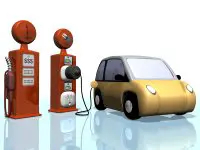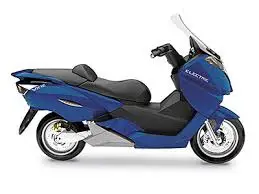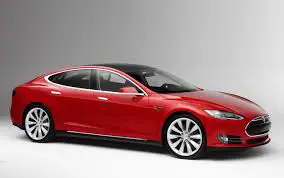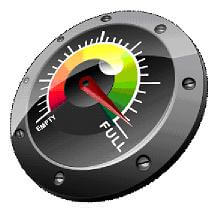Efficient Transport Technology
| Table of Contents |
|---|
| Free Best Transport Practices |
| Public Transport |
| Bicycle |
| Electric Scooter |
| Electric Car |

Free Best Transport Practices
- If possible walk or cycle short distances
- Avoid unnecessary acceleration to minimise energy consumption
- Choose higher gears when appropriate to reduce consumption
- Check tyre pressures, if too low it will increase fuel consumption
- Avoid unnecessary weight in vehicle boot or items such as roof racks when not needed
- Avoid peak hour traffic if possible
- Compare the cost of public transport versus car running costs including purchase; registration; fuel; insurance; depreciation; maintenance; parking
- Hire a special purpose vehicle instead of buying one for example 4WD for a camping weekend.
- Choose a vehicle than uses the least energy for your requirements
- Consider car pooling to save on costs
- Consider telecommuting instead of travelling daily to an office
References for further information 94 95
Table of Contents Reference Links
Public Transport
Public Transport Advantages
- Can be quicker than a car in peak hour, particularly if using special transit lanes.
- Can be cheaper than the overall cost of running a car
- No parking to pay, a big consideration in some cities you pay up to $50 a day
- No tolls to pay for roads, tunnels, bridges and inner city use.
- No stress and concentration required compared to driving, catch up on reading or paperwork
- City planning is easier when public transport is better utilised
- Less road upgrades; expansions; tunnels; bridges; needed if public transport is used effectively
- Less pollution in the cities
Public Transport Disadvantages
- Need to get to a station or bus or tram stop
- Only follows set routes
- Public transport may not be well supported in your neighbourhood
- Weekend and night schedules often have fewer services
- Peak periods can be crowded
Table of Contents Reference Links
Bicycle
Bicycle Advantages
- Quicker and more efficient than walking
- Can be quicker than a car in peak hour
- Gain fitness while using it
- Very quick if good bike paths are available
- Cheaper than a car to keep
- Free parking in most cities
- Bicycles with 200 Watt electric motors are still classed as bicycles. They have 40 km range, go up to 30 km/hr, cost under 5 cents to charge and will cost $1200-$2000 to buy.
Bicycle Disadvantages
- Need a place to park and secure the bike
- Purchase price of the bike
- Can be dangerous if bike paths are not available
- May require showering facilities at the destination
- In wet or very hot weather it is not pleasant
- Lighting required for night riding
- The helmet required in Australia when riding may affect hair style
 References for further information
96
97
References for further information
96
97
Table of Contents Reference Links
Electric Scooter
This is one of the cheapest ways of having using an electric vehicle. The specifications are useful for city use. Below is a description for a Vectrix Electric Scooter which is available in many countries of the world.
- Maximum speed 109 km/h
- Range 110 km
- 0 to 80 km/h in 6.8 seconds
- 3.7 kWh battery
- 2 hours to charge to 80% from regular power point
- Batteries good for 1700 charge cycles that is around 170,000 km
- Built in charger, just plug in power lead to charge
- Regenerative braking. Braking power is used to help charge the battery which also reduces brake pad wear.
- No gears
- Powered reverse is possible
- Choose green power from home and have a zero carbon footprint
- Cost $14000
| Scooter Running Costs | Total Charge (kWh) | Charger Efficiency | Total Power to Charge (kWh) |
|---|---|---|---|
| 3.7 | 0.85 | 4.35 |
| Electricity Supply Cost $/kWh | Total Charge Cost | Cost per km | Cost per 100000 km |
|---|---|---|---|
| $0.08 | $0.35 | $0.0032 | $316.36 |
| $0.10 | $0.44 | $0.0040 | $395.45 |
| $0.12 | $0.52 | $0.0047 | $474.55 |
| $0.14 | $0.61 | $0.0055 | $553.64 |
| $0.16 | $0.70 | $0.0063 | $632.73 |
| $0.18 | $0.78 | $0.0071 | $711.82 |
| $0.20 | $0.87 | $0.0079 | $790.91 |
| $0.22 | $0.96 | $0.0087 | $870.00 |
Other electric scooter benefits
- Less than 1 cent a kilometre to run
- No stopping at petrol stations
- No oil changes or exhaust maintenance
- No power wasted when idle unlike petrol engines
- Very little noise
- Parking may be free in some cities or parking spaces can be shared
| Parking 250 days a year | Year Total Cost |
|---|---|
| $5 | $1,250 |
| $10 | $2,500 |
| $15 | $3,750 |
| $20 | $5,000 |
| $25 | $6,250 |
| $30 | $7,500 |
| $35 | $8,750 |
| $40 | $10,000 |
| $45 | $11,250 |
| $50 | $12,500 |
 Suggestions:
If possible charge at night using off peak power rate.
Suggestions:
If possible charge at night using off peak power rate.
Related Sections: Green Power Options Electric Car
Local Assistance: Electric Vehicle Calculator Fuel Efficiency Converter
References for further information 1 98 99 126 135
Table of Contents Reference Links
Electric Car
 There are many manufacturers building electric cars including:
There are many manufacturers building electric cars including:
Tesla
Nissan
GM
Ford
BMW
Mercedes
Mitsubishi
Specifications for the 100% electric Nissan Leaf car are:
- Maximum speed 140 km/h
- Range 160 km
- 80 kW electric motor
- 5 doors, 5 passangers
- Air conditioning
- 0 to 100 km/h in 12 seconds
- 8 hours charge
- 24 kWh battery
- Cost 40,000 AUD
| Electric Car Running Costs | Total Charge (kWh) | Charger Efficiency | Total Power to Charge (kWh) |
|---|---|---|---|
| 24 | 85% | 28.2 |
| Electricity Supply Cost $/kWh | Total Charge Cost | Cost per km | Cost per 100000 km |
|---|---|---|---|
| $0.10 | $2.82 | $0.017 | $1,762.50 |
| $0.20 | $5.64 | $0.034 | $3,525.00 |
| $0.30 | $8.46 | $0.052 | $5,287.00 |

Tesla has become a dominant Electric Car manufacturer.
The recent completion of the battery factory in Nevada will help lower battery costs.
Initially they made a Tesla Roaster sportcar. This was followed by the Model S sedan which is most popular now.
There is also a Tesla Model X SUV and a small Model 3 due in late 2017.
- Maximum speed 249 km/h
- Range 491 km
- 164 kW and 350 kW electric motors
- 5 doors, 5 passangers
- Front and back boot storage (no engine bay)
- Air conditioning
- 0 to 100 km/h in 3.3 seconds (supercar acceleration)
- 75 minutes at Supercharger. 27 hours charge time from 240 volt 15 amp powerpoint.
- 85 kWh battery built into floor
- Car computer updates via the Internet from home
- Cost 157,000 AUD
| Electric Car Running Costs | Total Charge (kWh) | Charger Efficiency | Total Power to Charge (kWh) |
|---|---|---|---|
| 85 | 85% | 100 |
| Electricity Supply Cost $/kWh | Total Charge Cost | Cost per km | Cost per 100000 km |
|---|---|---|---|
| $0.10 | $10.00 | $0.020 | $2,036.00 |
| $0.20 | $20.00 | $0.040 | $4,914.00 |
| $0.30 | $30.00 | $0.061 | $6,109.00 |
Other electric car benefits
- Approximately 1 to 6 cent a kilometre to run
- No stopping at petrol stations
- No oil changes or exhaust maintenance
- No power wasted when idle unlike petrol engines
- Very little noise
Compare the costs of a similar sized efficient petrol car, Toyota Yaris 3 door. City / Country fuel economy value used.
| Petrol Car Running Cost | Consumption litres/100 km | litres / km |
|---|---|---|
| Yaris 3 door | 6.1 | 0.061 |
| Fuel Cost per litre | Cost per km | Cost per 100000 km |
|---|---|---|
| $1.20 | $0.07 | $7,320.00 |
| $1.40 | $0.09 | $8,540.00 |
| $1.60 | $0.10 | $9,760.00 |
| $1.80 | $0.11 | $10,980.00 |
The comparison shows that electric cars should have a lower running cost compared to a similar sized petrol car. If peak hour traffic is encountered regularly then petrol fuel consumption would be worse. The differences are greater when compared to larger petrol vehicles. Factor in the trend of increasing the price of petrol over the life of the vehicle.


Suggestions: Use your own solar power to charge the car (~free). Charge at night using off peak power rate if possible. Choose a vehicle size that suits your needs and check its economy before purchase. Consider alternative energy production to lock in your future transport energy costs. Consider green power to eliminate all your electric generation emissions.
Related Sections: Green Power Options Electric Scooter
Local Assistance: Electric Vehicle Calculator Fuel Efficiency Converter
References for further information 1 100 101 102 103 94 135 136 146 151
Table of Contents Reference Links